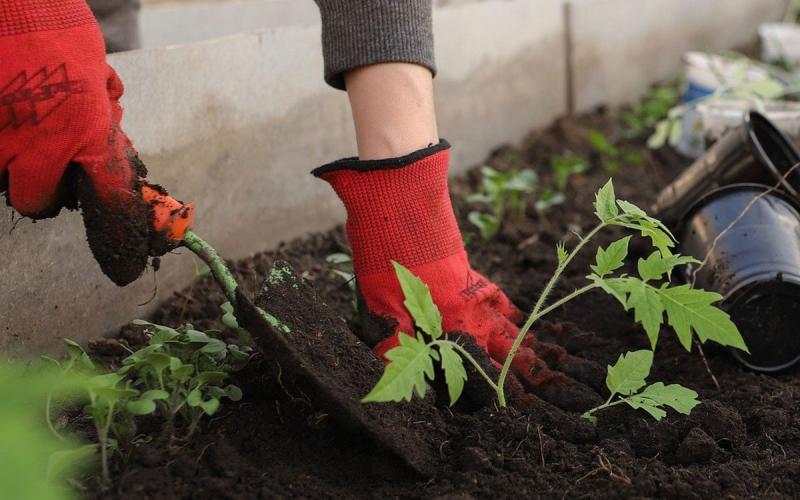Written collaboratively by Prairey Walkling and Rhoda Burrows, former Professor & SDSU Extension Horticulture Specialist.
Description
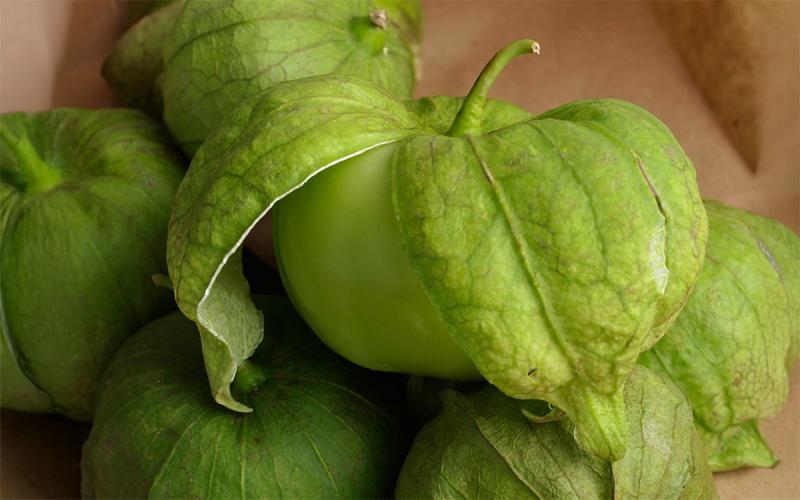
General Description: Tomatillos are the lesser-known cousin of tomatoes, and they are most often used in sauces or salsas. They can be hard to find in our local grocery stores, so if you want them, you may have to grow them!
Tomatillos are a member of the nightshade family, and they are native to Mexico and Central America. Tomatillos are also known as husk tomatoes. Although commonly compared to tomatoes, tomatillos are most closely related to groundcherries and Chinese lantern fruit, as they all belong to the plant genus “Physalis” and share similar characteristics, such as a papery husk covering their fruit. When growing plants in the Physalis genus, only eat ripe fruits that fall to the ground in their papery husks. Unripe fruits and other plant parts are poisonous and should not be eaten.
Types of Tomatillos
Varieties: There are two main species of tomatillos: Physalis ixocarpa and Physalis philadelphica. Tomatillos are an annual, warm-season crop with requirements similar to tomatoes, except that they tend to be more drought and heat tolerant. Fruit can be green, yellow, red, or purple, depending on the variety, and they are said to taste like a “tangy lemon.”
Tomatillos come in many colors, sizes, and flavors, but no varieties are developed specifically for northern gardens. The three most-common colors and their varieties are listed below.
Green
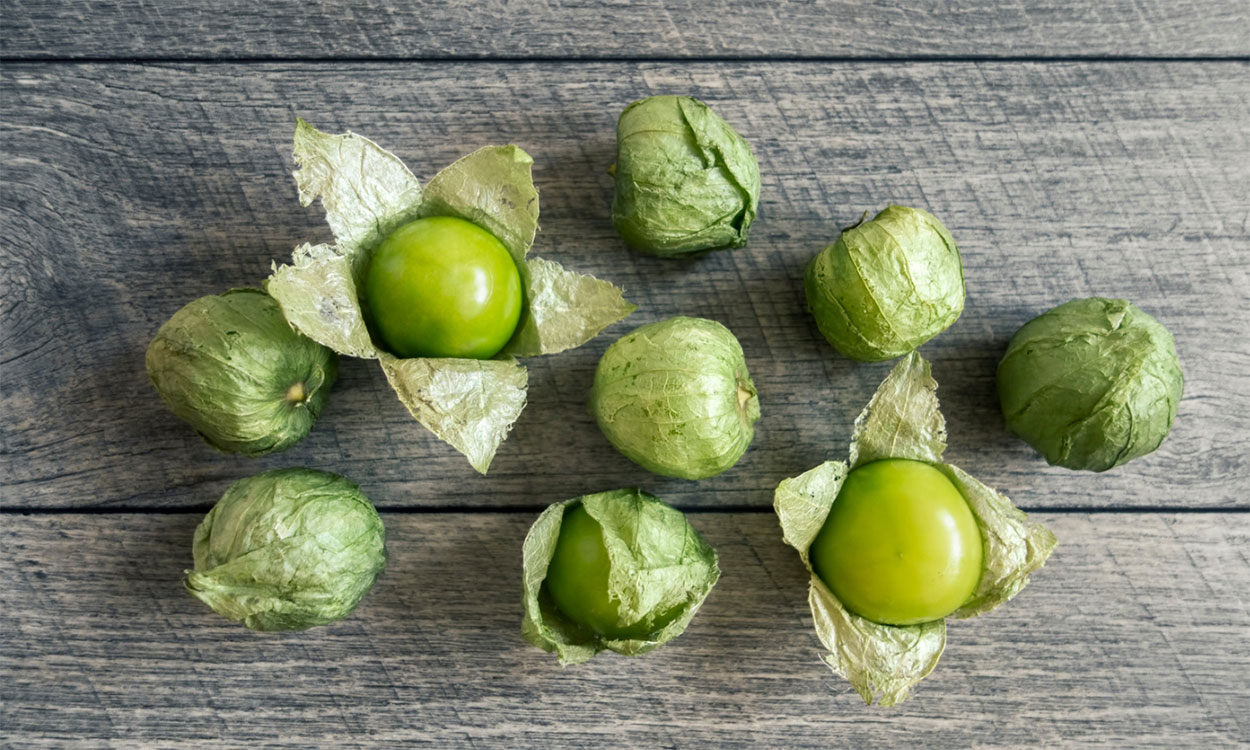
Yellow
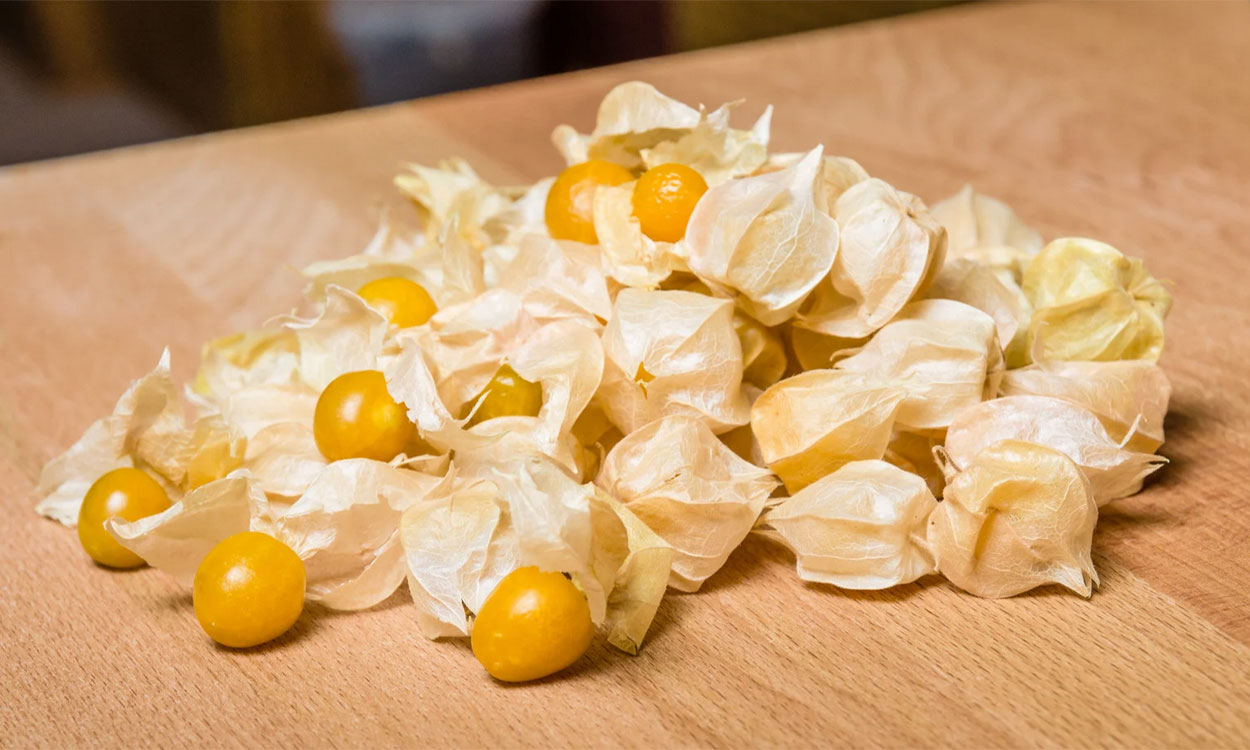
Purple
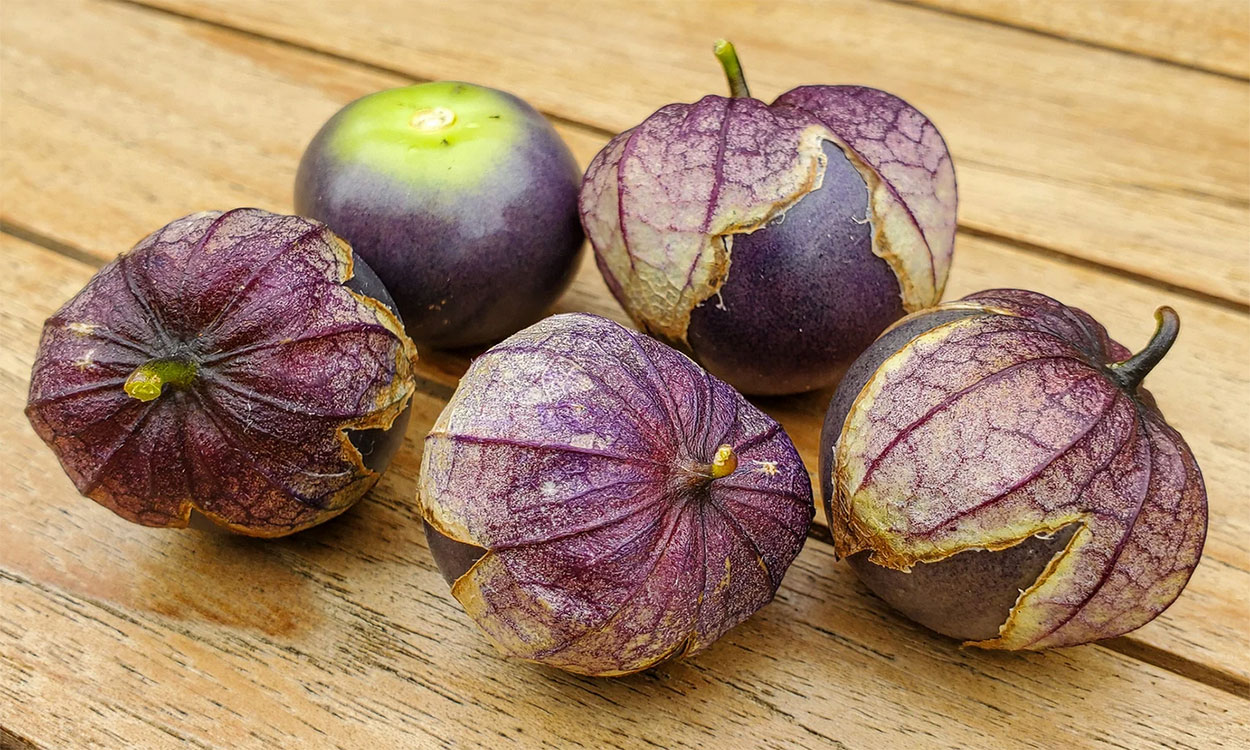
Planting
Timeline: Tomatillos are easily grown from seed, or you can purchase a transplant. If starting indoors, plant them 4 to 5 weeks before transplanting (a week or 2 later than tomatoes). Tomatillos require cross-pollination by insects, so you should plant at least 2 plants, and 2 different varieties is ideal. They are not frost-tolerant, so wait to transplant them until all danger of frost has passed and the soil has warmed (Figure 1).

Transplanting: Be sure to harden off the transplants by setting them outdoors for 1 to 2 hours at first, and then gradually lengthening the time spent. Watch the plants carefully, as wind can quickly dry them out. Tomatillos have a bushy habit and should be transplanted with 3 feet between plants. Like tomatoes, tomatillos can be planted deeply to encourage extra roots. Plan to trellis, cage, or otherwise support each plant.
Site Selection: Like most vegetables, tomatillos need 8 hours of sun per day. Do not plant where nightshade crops (such as tomatoes, peppers, or eggplants) were planted the previous year.
Plant Care
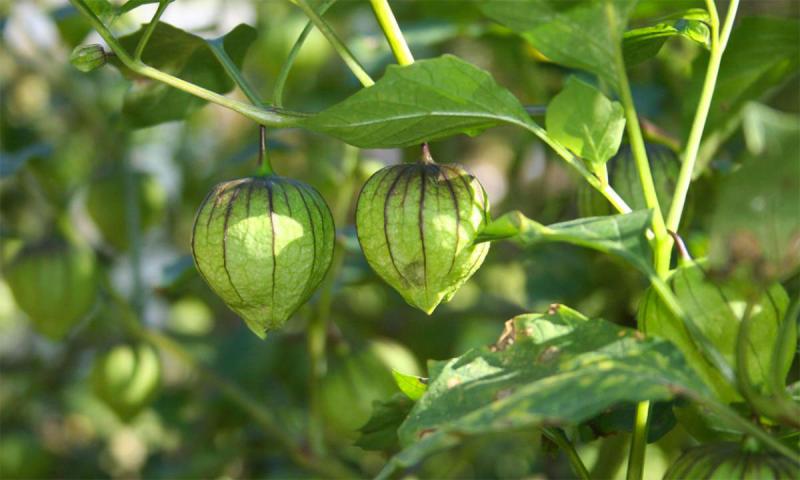
Temperature & Pruning: Be aware that temperatures above 90 degrees Fahrenheit or below 55 degrees Fahrenheit can cause flowers to drop and not produce fruit. Plants need good air circulation, so if they begin to crowd each other, prune them back.
Watering: Tomatillo’s strong root systems help them withstand drought and heat. Apply enough water at each application so that the whole root area is moistened – at least 6-inches deep. Water about 1 to 1.5 inches per week, and don’t let more than the top inch of soil dry out (a mulch can help keep the soil moisture levels consistent over time). Avoid overhead sprinkling, as this can make plants more disease-prone.
Controlling Weeds: Tomatillos are good competitors to weeds and shade out many weed seedlings. Mulching with organic materials can help prevent weed growth.
Fertilizing: Often, soil tests in South Dakota indicate a need only for nitrogen. In that case, a lawn fertilizer such as 26-0-0 (be sure it is not a “weed and feed” product, which also contains herbicide) can be used, at a rate of about ¼ pound (4 ounces) per 100 square feet. Beware that too much nitrogen can cause a plant to grow more leaves than flowers. If you are unsure of your soil, have a soil test taken (contact SDSU Extension or your local SDSU Extension Master Gardener for more information.)
Pests and Diseases
Tomatillos are naturally resistant to most diseases and pests. Most insect damage will be to the leaves, as the papery husk protects the fruit from pests.
Pests: Beware of the three-lined potato beetle! These can easily be confused with the Colorado potato beetle or the cucumber beetle. Three-lined potato beetles are interesting, because they rarely do much damage or are considered a pest—unless you have a tomatillo plant! If you only have a few plants, the best management is to handpick adults (Figure 2), larvae, and egg clusters (Figure 3) and squish them, or drop into soapy water. Check your plants regularly for the best results.
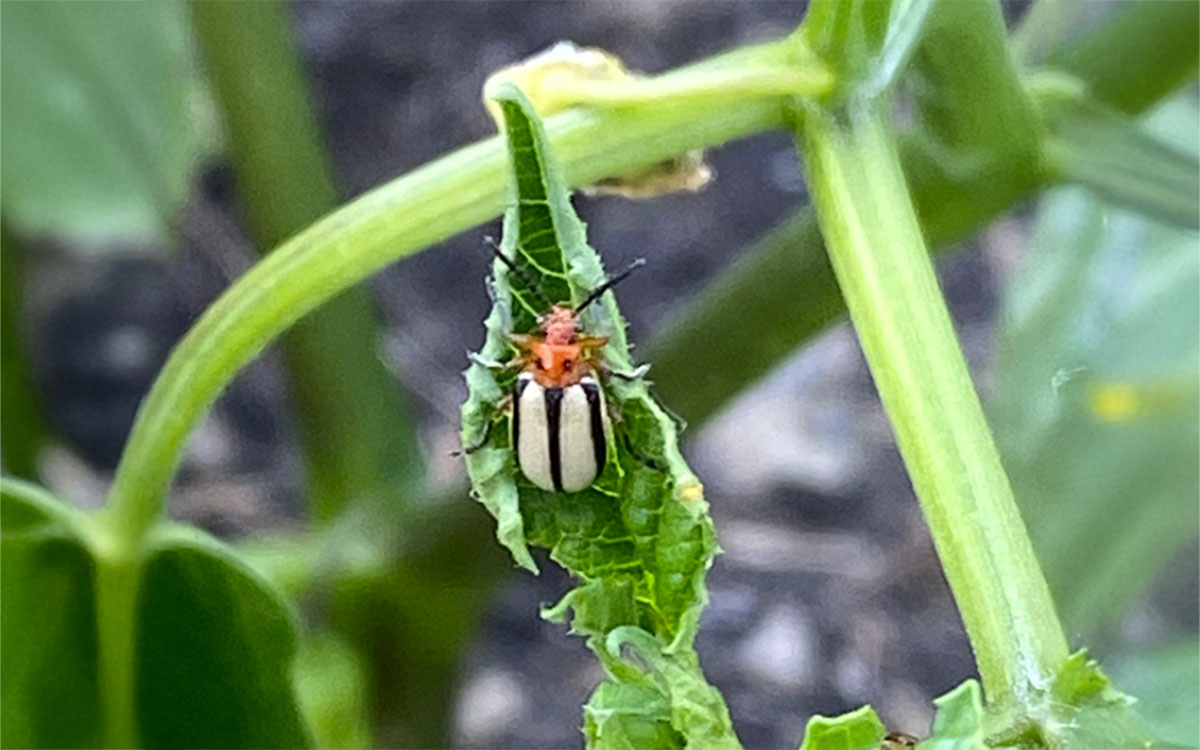
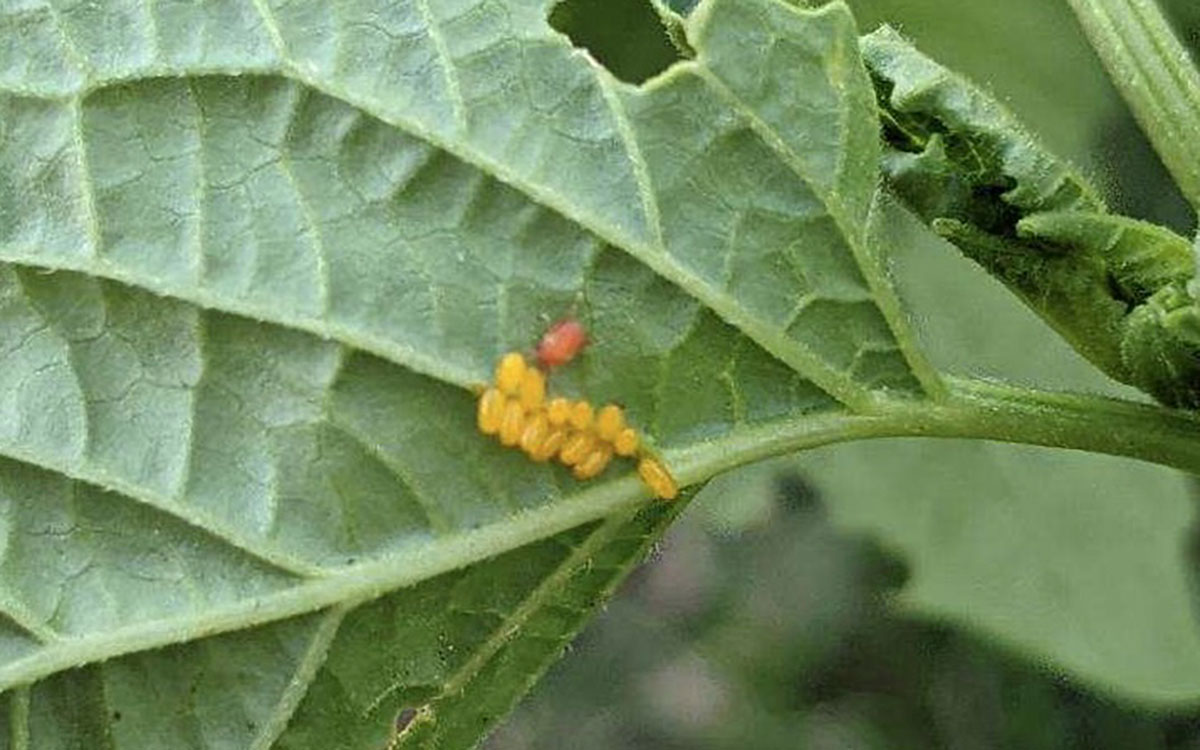
To prevent an infestation:
- Rotate crops. Do not plant nightshades where you planted nightshades last year. This makes it harder for beetles to find food in the spring.
- Install a floating row cover at the time of planting.
Other insects that can feed on tomatillo plants are flea beetles, cutworms, and tomato hornworms.
Diseases: Tomatillos are vulnerable to many diseases that affect the nightshade family (potatoes, tomatoes, peppers, and eggplant). Early blight, anthracnose, late blight, and tobacco mosaic virus can affect tomatillos.
Harvest & Storage
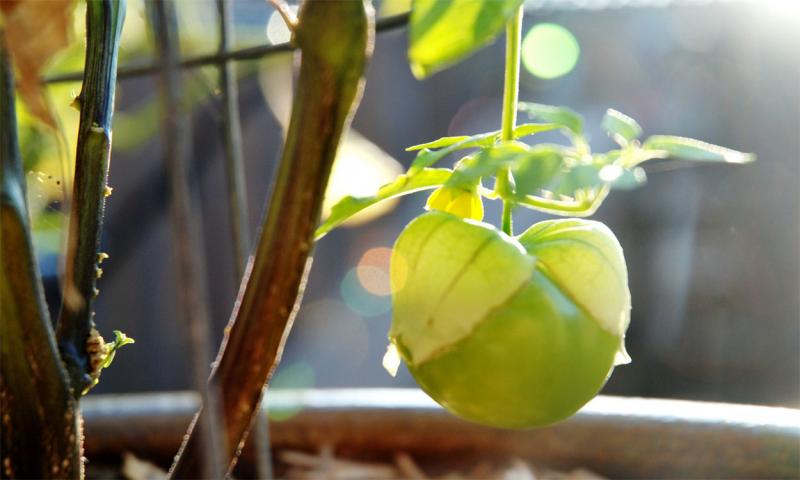
Harvest: Tomatillos will be ready to harvest 65 to 100 days after transplanting. The fruit is ready to harvest when it completely fills the husk and easily falls off the plant when picked. Additionally, the husk will dry out and turn from a green color to a tan color and will begin to split open. The color of fruit itself at maturity varies by cultivar, but green varieties of tomatillos should be harvested before they start to turn yellow or purple. Once green varieties begin to change color, they become soft and lose their tangy flavor. Tomatillos are indeterminate plants, meaning that they will produce fruit continuously throughout the season, which allows for multiple harvests. Pick weekly, or as needed.
How to Harvest: Tomatillos can be harvested using a pruner or scissors and snipping the fruit from the plant, or by simply twisting the fruit and gently pulling. As mentioned above, tomatillos should come off the plant easily when they are ripe, so there should be no need to pull too hard, as this could damage the plant. Fruit sometimes drops from the plant before it is ripe. Because tomatillos continue to ripen after they are separated from the plant, these can be gathered and stored in their husks until they ripen. As tomatillos are harvested from the plant, they should be placed gently (not tossed) into a clean bucket or harvest bin to avoid bruising and cracking. Be sure to harvest any fruit (ripe or unripe) before a freeze to avoid damage to the fruit.
Storage: After harvesting, tomatillos do not require a curing phase, but they should be stored in a cool, well-ventilated space between 42 and 60 degrees Fahrenheit with 60 to 80% relative humidity. Tomatillos can be kept in a paper bag in the fridge with the husks on for 1 to 2 weeks. If the fruit is kept in an airtight bag, it will spoil much faster, so keeping it in paper bags is essential. Tomatillos can also be stored this way in bulk using plastic storage crates, as long as they are well-ventilated and the fruit remains at the proper temperature. The fruit can also be frozen and will last in the freezer for up to 8 to 12 months. To freeze tomatillos, remove the husks, wash and dry the fruit, and then freeze inside a freezer bag. Tomatillos are also ethylene-sensitive, so do not store them near fruits like apples or bananas.
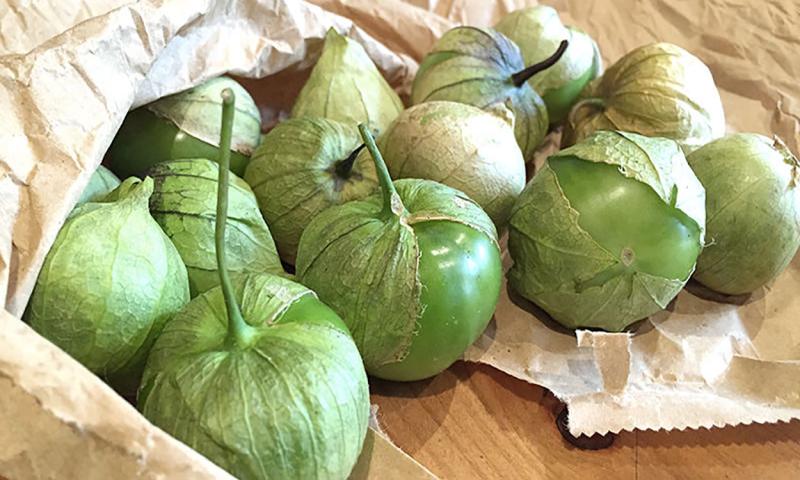
Cleaning Tomatillos: After harvesting, sort through and remove any damaged fruit, as these can be disease entry points and contaminate your other fruit. After that step is complete, it is best to keep the fruit in the husk until it is ready to be used or frozen. When ready to use, remove the husk, as it is not edible. The fruit itself is usually sticky, so the next step is to wash off the sticky residue with water. Before eating or processing tomatillos, the fruit should be washed and dried. This is especially important for any fruit that has fallen from the plant or touched the ground at all.
Preparation and Nutrition
Culinary Use: Tomatillos can be eaten raw if you first remove the husk and wash off the sticky residue. Eaten raw, they are quite sour, tart, and acidic. Some describe them as tasting similar to a green tomato. It’s more common to cook them and make salsa, stews, moles, or sauce. They can be boiled or roasted in the oven, stovetop, or on the grill.
Nutrition Facts: Tomatillos are low in calories and packed with potassium and vitamins C and K.
Preservation: Tomatillos can be preserved by freezing, canning or drying. For information on preparing or preserving tomatoes, see our Pick it! Try it! Like it! resource for tomatillos.
Additional Resources
- Three-lined potato beetles are eating my tomatoes, Adam Varenhorst, SDSU Extension.
- Tomatillos: Harvest & Storage, Kristine Lang, SDSU Extension.
- Growing Tomatillos and Ground Cherries, Jill MacKenzie, UMN Extension.
- How to Grow Tomatillos in Your Garden, Kristiane Pedersen and Dan Drost, Utah State Extension.
- Interpreting Soil Tests for Gardening, Hans Klopp, SDSU Extension
